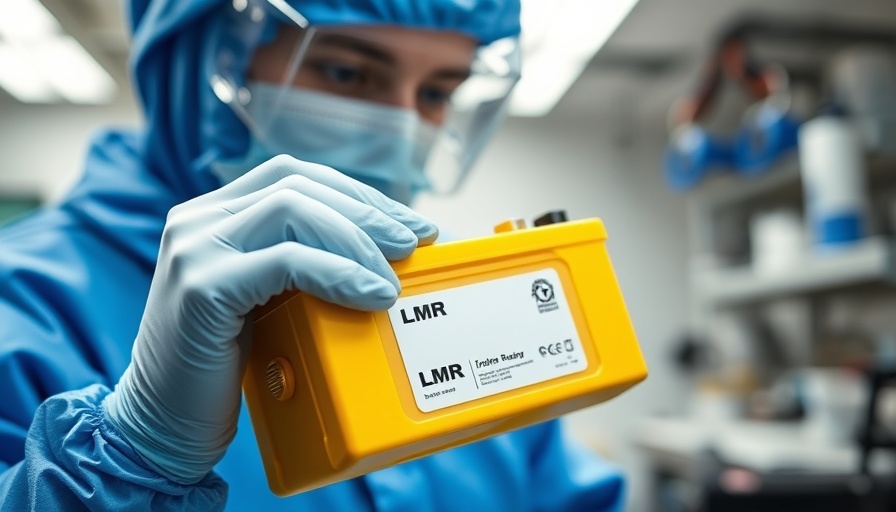
Revolutionizing Electric Vehicles: The Future with LMR Batteries
As the automotive industry continues to pivot towards electric vehicles (EVs), new technological advancements are surfacing to enhance performance and affordability. One such innovative leap is the introduction of lithium manganese-rich (LMR) batteries, set to debut in General Motors’ lineup by 2028. This new battery technology promises to redefine energy density and cost-effectiveness, which are crucial for the sustainable future of electric vehicles.
The Importance of Energy Density in EVs
Energy density—the amount of electric charge a battery can store in a given volume—plays a pivotal role in EV performance. Current standard batteries, like those using nickel-cobalt-manganese (NCM) technology, have significant constraints. Although robust, they rely heavily on cobalt, a material linked to environmental issues and ethical concerns regarding mining practices. In contrast, LMR batteries, which utilize a composition rich in manganese (about 65%) and a mere 35% nickel, offer a promising alternative that is both cheaper and more ethically sourced. Notably, manganese is one of the Earth’s most abundant elements, making it a sustainable choice for future battery production.
A New Standard in Battery Production
Currently, battery production for EVs involves numerous challenges, particularly concerning the cost and sourcing of the materials. The shift to LMR technology, which parallels GM’s current focus on production efficiency, may drastically reduce costs while improving battery performance. Thus, LMR batteries retain many efficiencies of lithium iron phosphate (LFP) batteries—costing about 20% less than NCM batteries—while promising 30% greater energy density. This effective balance presents a transformative opportunity for not just GM, but also the entire automotive sector.
The Broader Impact of LMR Technology
As these new battery technologies roll out, their implications extend beyond just vehicles. The economic landscape surrounding battery manufacturing is also poised for change. Companies are focusing on scaling LMR technology and integrating it within their existing vehicle fabrications. Ford, for example, is exploring similar advancements in their electric lineup, emphasizing safety and performance. Such trends indicate a robust push towards not only greener technology but also strengthening the supply chain and reducing our reliance on scarce materials.
Future Implications for the Industry
As the landscape of electric vehicles evolves, understanding the ripple effects of innovations like the LMR battery can also reveal future market trends. Companies that embrace these changes will not only lead in battery technology but could also capture a significant share of the growing EV market, projected to expand exponentially as environmental awareness increases. With more consumer options at potentially lower costs, the overall transition to electric vehicles will accelerate, propelling us further down a sustainable path.
In essence, the introduction of LMR batteries in the coming years could effectively alter the entire industry landscape, moving it toward a more sustainable and economically viable future.
Stay informed on new developments in EV technologies and consider how future advancements might impact your choices as a consumer. The shift to electric is not just a phase; it's the future of transportation.
 Add Row
Add Row  Add
Add 




Write A Comment